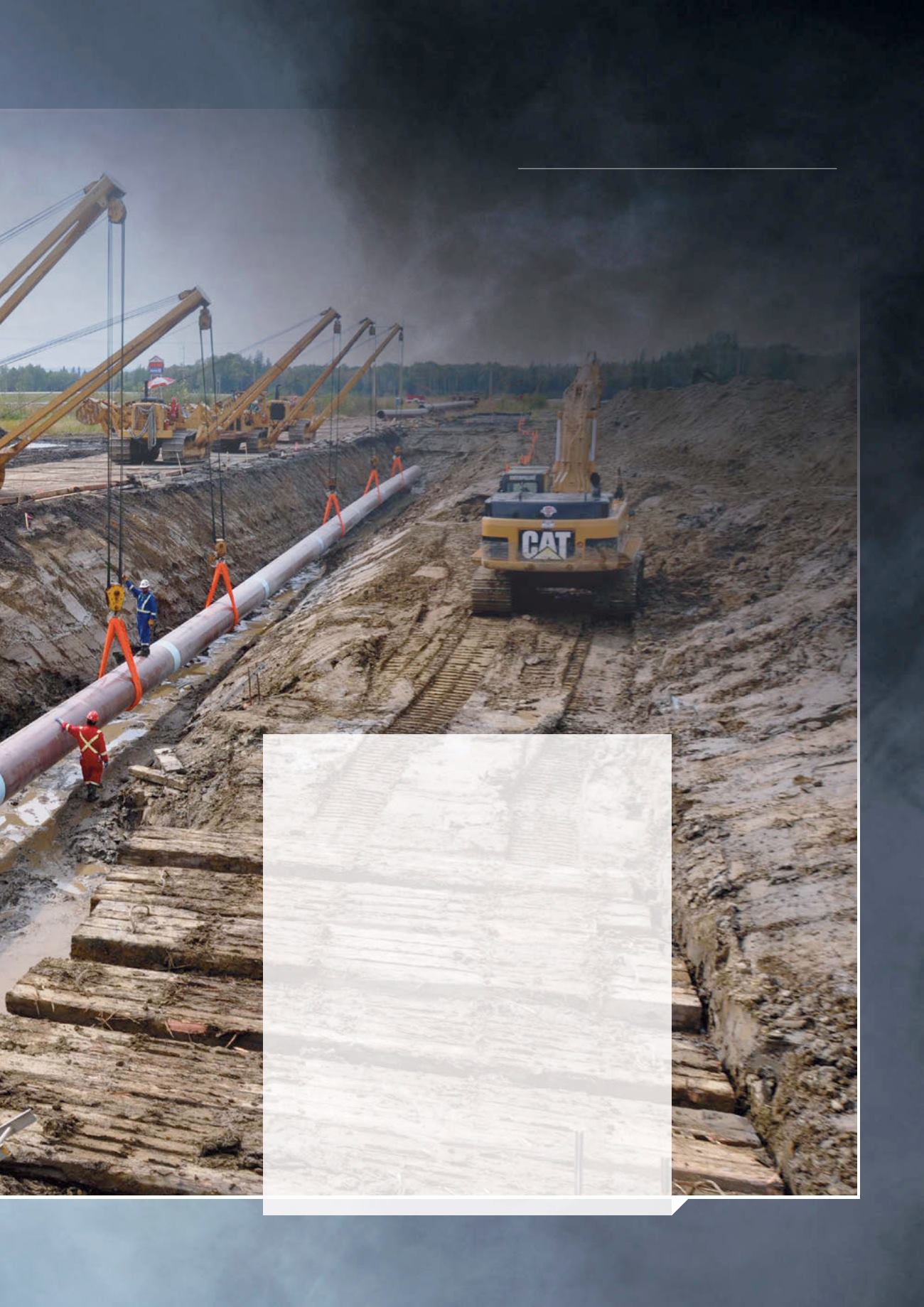
Figure 1.
Sidebooms continue to play a critical role in
constructing pipelines throughout western Canada.
L
et’s face it. The pipeline construction business isn’t
the easiest to navigate. When a pipeline operator
decides when a construction project is to kick
off, contractors must respond, ready with crew,
equipment and a plan that will result in project completion,
within budget and on time.
“Given its cyclical nature, it’s a wily industry. But with
50 years in the business, staying on top of potential projects
and being prepared to respond is like second nature,” said
Kevin Waschuk, Vice President of family owned and operated
Waschuk Pipe Line Construction, Canada’s largest privately-
held mainline pipeline construction contractor. “It all comes
down to keeping in touch with trends, especially with regard
to equipment and working practices. Plus, what is happening
in terms of potential projects: whether a project is delayed
or lands ‘live’ on the table. You need to have contingency
plans in place: how many pipelayers and trenchers will be
available in six months when the job starts? And what about
crew? If the project takes three years, will we have enough
pipelayer operators or are half retiring in two years?”
These are just some of the questions that pipeline
construction contractors contend with, and they are a direct
reflection of larger issues facing the industry.
19


